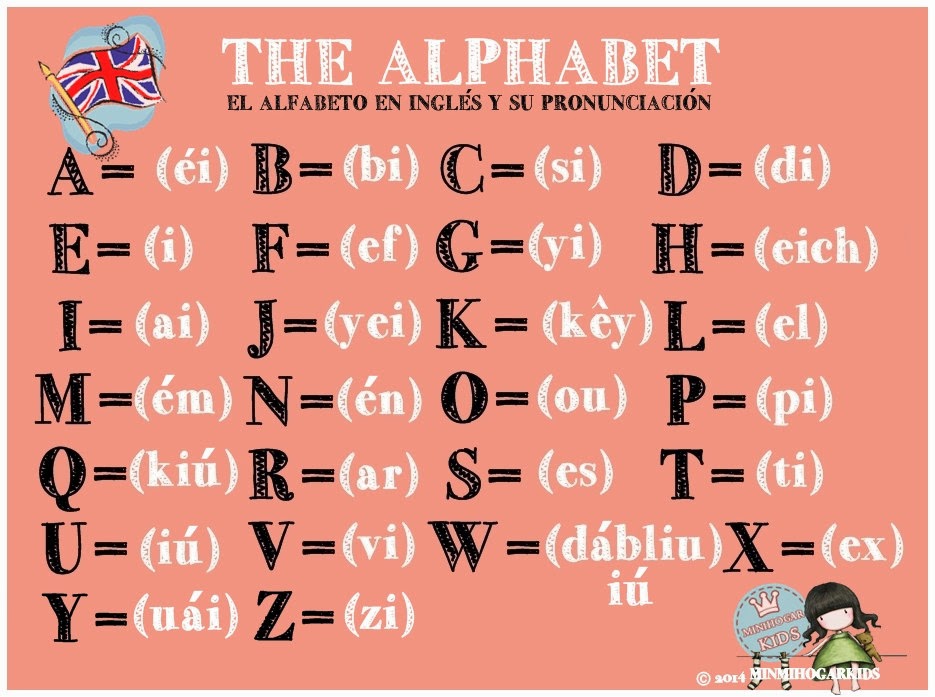The English alphabet is a fundamental aspect of the English language, consisting of 26 letters that form the building blocks of communication. Understanding the alphabet and its pronunciation is essential for anyone looking to learn English, whether as a first language or as a second language. This article will delve into the intricacies of the English alphabet, providing not only the letters themselves but also how to pronounce them correctly. By the end of this article, you will have a comprehensive understanding of the English alphabet and its phonetic nuances.
The English language, with its rich history and diverse influences, has evolved over centuries. Its alphabet has roots in the Latin script, which was adapted from the Greek and Phoenician alphabets. This historical context is important as it shapes how we approach the pronunciation and usage of letters in modern English. In this article, we will explore each letter, its sound, and provide examples to aid in understanding.
In addition to the basic letters, we will discuss common variations in pronunciation, regional accents, and the significance of phonetics in mastering the English language. This article aims to be a valuable resource for students, teachers, and anyone interested in improving their English skills. So, let’s get started on this journey through the English alphabet!
Table of Contents
- The English Alphabet
- Pronunciation of Each Letter
- Understanding Vowels and Consonants
- Common Pronunciation Errors
- Regional Accents in English
- The Importance of Phonetics
- Additional Resources for Learning
- Conclusion
The English Alphabet
The English alphabet consists of 26 letters, each with its own unique sound. Here is a list of the letters:
- A
- B
- C
- D
- E
- F
- G
- H
- I
- J
- K
- L
- M
- N
- O
- P
- Q
- R
- S
- T
- U
- V
- W
- X
- Y
- Z
Pronunciation of Each Letter
Here we will detail the pronunciation of each letter in the English alphabet:
A to M
- A - /æ/ as in "cat"
- B - /biː/ as in "bee"
- C - /siː/ as in "see"
- D - /diː/ as in "dee"
- E - /iː/ as in "see"
- F - /ɛf/ as in "eff"
- G - /dʒiː/ as in "gee"
- H - /eɪtʃ/ as in "aitch"
- I - /aɪ/ as in "eye"
- J - /dʒeɪ/ as in "jay"
- K - /keɪ/ as in "kay"
- L - /ɛl/ as in "el"
- M - /ɛm/ as in "em"
N to Z
- N - /ɛn/ as in "en"
- O - /oʊ/ as in "oh"
- P - /piː/ as in "pee"
- Q - /kjuː/ as in "cue"
- R - /ɑːr/ as in "ar"
- S - /ɛs/ as in "ess"
- T - /tiː/ as in "tee"
- U - /juː/ as in "you"
- V - /viː/ as in "vee"
- W - /ˈdʌbəl.juː/ as in "double-u"
- X - /ɛks/ as in "ex"
- Y - /waɪ/ as in "why"
- Z - /ziː/ or /zɛd/ depending on the region
Understanding Vowels and Consonants
In the English alphabet, letters can be categorized into vowels and consonants:
Vowels
The vowels in the English alphabet are A, E, I, O, U, and sometimes Y. Each vowel has both a short and long pronunciation:
- A: /æ/ (cat) and /eɪ/ (cake)
- E: /ɛ/ (bed) and /iː/ (beet)
- I: /ɪ/ (sit) and /aɪ/ (ice)
- O: /ɑː/ (hot) and /oʊ/ (home)
- U: /ʌ/ (cup) and /juː/ (unicorn)
Consonants
All other letters are consonants. Each consonant has its own unique sound, and some can vary in pronunciation depending on their placement in a word.
Common Pronunciation Errors
When learning the English alphabet, many learners encounter common pronunciation errors:
- Mispronouncing the letter "R" as "ah" instead of "ar".
- Confusing the sounds of "B" and "V".
- Pronouncing "W" as "double-u" incorrectly.
Regional Accents in English
The pronunciation of letters can vary greatly depending on regional accents. For instance, the letter "R" is pronounced more prominently in American English than in British English. Understanding these differences can enhance your communication skills.
The Importance of Phonetics
Phonetics plays a crucial role in mastering the pronunciation of the English alphabet. By studying phonetic symbols and sounds, learners can improve their pronunciation and comprehension skills.
Additional Resources for Learning
To further enhance your understanding of the English alphabet and pronunciation, consider the following resources:
- Online phonetic dictionaries.
- YouTube pronunciation tutorials.
- Language learning apps with pronunciation features.
- Local language clubs or classes.
Conclusion
In summary, the English alphabet is not just a simple collection of letters; it is a complex system that requires understanding of its pronunciation, variations, and phonetic intricacies. By mastering the English alphabet, you will significantly improve your language skills. We encourage you to practice regularly and utilize the resources mentioned in this article.
We would love to hear your thoughts! Please leave a comment below, share this article with others, or explore more articles on our site to enhance your English learning journey.
Thank you for reading, and we hope to see you back here for more insightful content!


